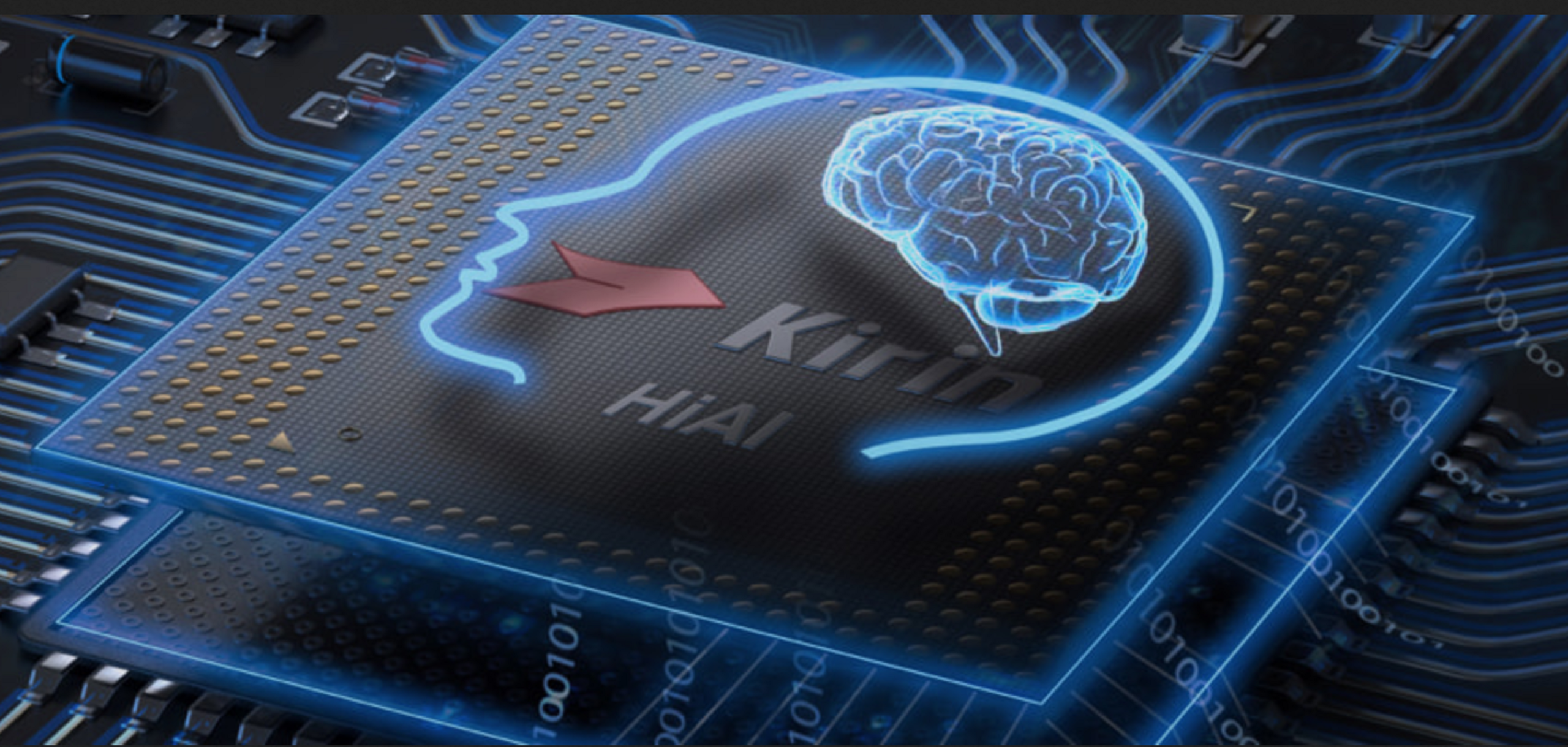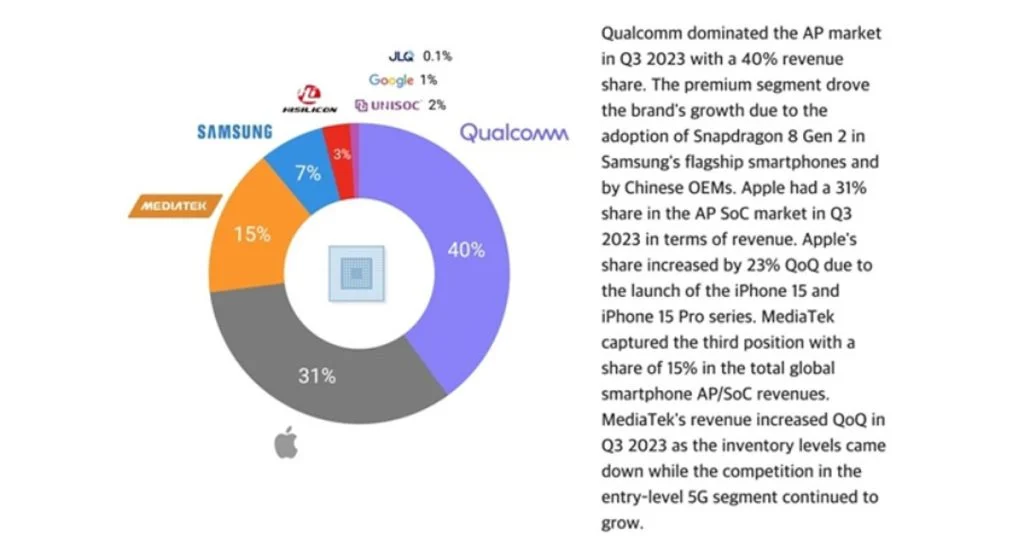Highlights
- Huawei’s Hisilicon captures 3% of the global chipset market in Q3 2023.
- Mate 60 series smartphones powered by 5G Kirin 9000s processor.
- Mixed performance reviews for Kirin 9000s against leading chipmakers.
- Huawei plans to expand its Kirin processor use in the upcoming Nova 12 series.
Huawei, once beleaguered by US sanctions and chip shortages, has remarkably regained its status as one of the top five global chipmakers.
The revelation is part of Counterpoint Research’s report for the third quarter of 2023 reveals that Hisilicon, Huawei’s chip-making subsidiary, now commands a 3% share of the global chipset market.
Kirin 9000s on Mate 60 Series

The catalyst for Huawei’s revival has been its 2023 product lineup, headlined by the Mate 60 series smartphones which are powered by the 5G Kirin 9000s processor.
Released on August 29th, 2023, the Kirin 9000S has a 12-core chipset that encompasses a combination of Cortex-X1, Cortex-A710, and Cortex-A510 cores, running alongside a 750 MHz GPU.
It is fabricated on a 14-nanometer process, despite rumours that it uses SMIC’s 7nm-class fabrication process, and supports connectivity features like 4G, 5G, and Wi-Fi 6.
However, performance assessments of the Kirin 9000S have been mixed.
While it represents a leap in Huawei’s in-house chipset design, it has been found to trail behind in certain areas like GPU performance.
More notably it is nowhere near the current flagship standards of Qualcomm, Apple, and MediaTek all of whom are using 4nm and 3nm fabrication processes, giving each an unparalleled superiority over their Huawei counterparts in terms of power efficiency.
What’s Next For Huawei?

Looking ahead, Huawei is poised to maintain its momentum into 2024 with the upcoming Nova 12 series, which is also rumoured to be equipped with Kirin processors.
This move could potentially boost Huawei’s standing in the mid-range segment, currently being dominated by the likes of Vivo, OPPO, and Xiaomi.
In the broader landscape, Counterpoint’s report states that Qualcomm remains the market leader, holding a 40% share, largely thanks to its Snapdragon 8 Gen 2 processor that powers several premium smartphones from Chinese manufacturers.
Apple follows with a 31% market share, driven by its iPhone 15 series.
MediaTek is in third place, capturing a 15% share, while Samsung claims fourth place with 7%.
After Huawei, Unisoc takes the sixth position with a 2% share, and Google’s Tensor SoC rounds out the top seven with a 1% share.
Despite the impressive turnaround, the shadow of US sanctions, which targeted Huawei’s access to crucial American technology and components, lingers.
Huawei’s resurgence is indicative of its determination and capacity to innovate but it will need to ramp up its technology prowess to really compete in the smartphone market.
FAQs
What is the significance of Huawei’s Kirin 9000S processor for the company?
Huawei’s Kirin 9000S processor signifies the company’s resurgence in the global chipset market, especially since it has been integrated into the Mate 60 series smartphones.
Despite US sanctions, this chipset has aided Huawei in reclaiming a 3% market share and marks a significant milestone in the company’s recovery.
How does the Kirin 9000S compare with other chipsets in the market?
The Kirin 9000S, while a leap forward for Huawei, shows mixed performance results, particularly in GPU benchmarks.
It currently does not match the efficiency of the chipsets from Qualcomm, Apple, and MediaTek, which utilize more advanced 4nm and 3nm processes.
What are Huawei’s plans for the Kirin 9000S moving forward?
Huawei is expected to continue incorporating the Kirin 9000S into its future devices, with the Nova 12 series slated to feature this processor.
This strategic move could enhance Huawei’s competitiveness in the mid-range smartphone segment.
How has Huawei’s position in the chipset market changed recently?
Despite previous setbacks due to US sanctions, Huawei has made a commendable comeback in the chipset market as of the third quarter of 2023, securing a top-five position.
The company’s Hisilicon subsidiary has been pivotal in this growth, showing Huawei’s resilience and innovative capabilities.
How does the Kirin 9000S compare to the Kirin 9000 in CPU performance?
The Kirin 9000S shows improved CPU performance over the Kirin 9000, with a 4% increase in single-threaded tasks and a significant 17% improvement in multi-threaded operations, as per Geekbench 6 scores.
What are the limitations of the Kirin 9000S in GPU-intensive tasks?
In GPU-related tasks, the Kirin 9000S experiences a 33% decrease in performance compared to the Kirin 9000, notably affecting gaming and OpenCL/Vulkan benchmarks.
How does the manufacturing process affect the Kirin 9000S’s battery life?
The use of a second-generation 7nm-class process in the Kirin 9000S, compared to the more advanced 5nm process in its predecessor, results in less battery efficiency, potentially leading to reduced battery life in devices using this SoC.
What is the overall performance rating of the Kirin 9000S?
Despite facing certain limitations, the Kirin 9000S achieves an overall chip score of 76 by NanoReview, indicating its competence as a general-purpose SoC under the given constraints.
Also Read: Leaked 3D Render Reveals Mysterious Huawei Smartphone, Could Be Nova 12 Ultra or the P70
Also Read: Huawei Enjoy 70 Launched in China: Price, Features, Specs
Also Read: Huawei’s Kirin 9000S SoC Doesn’t Fare to Well Compared to the Kirin 9000: Report
